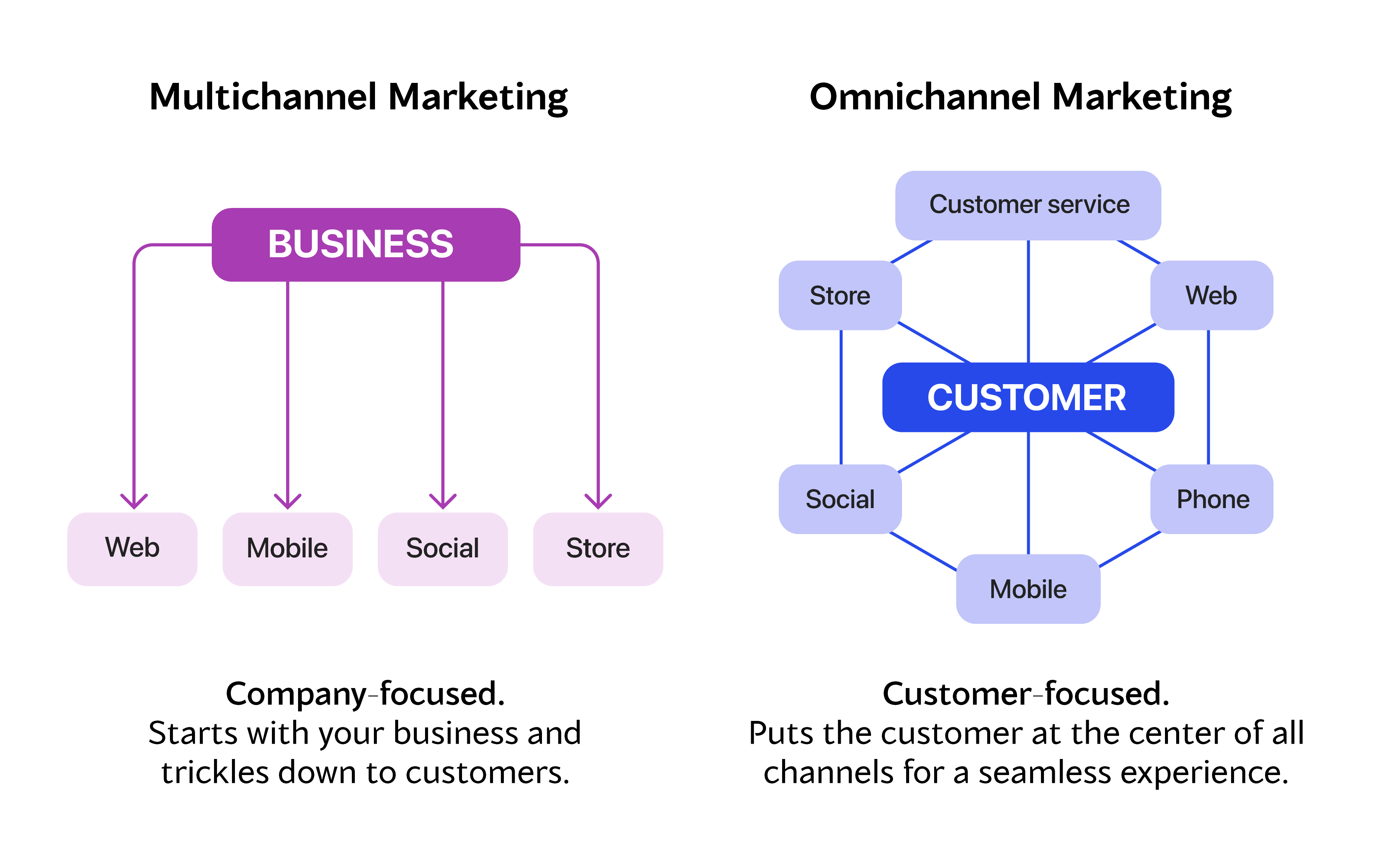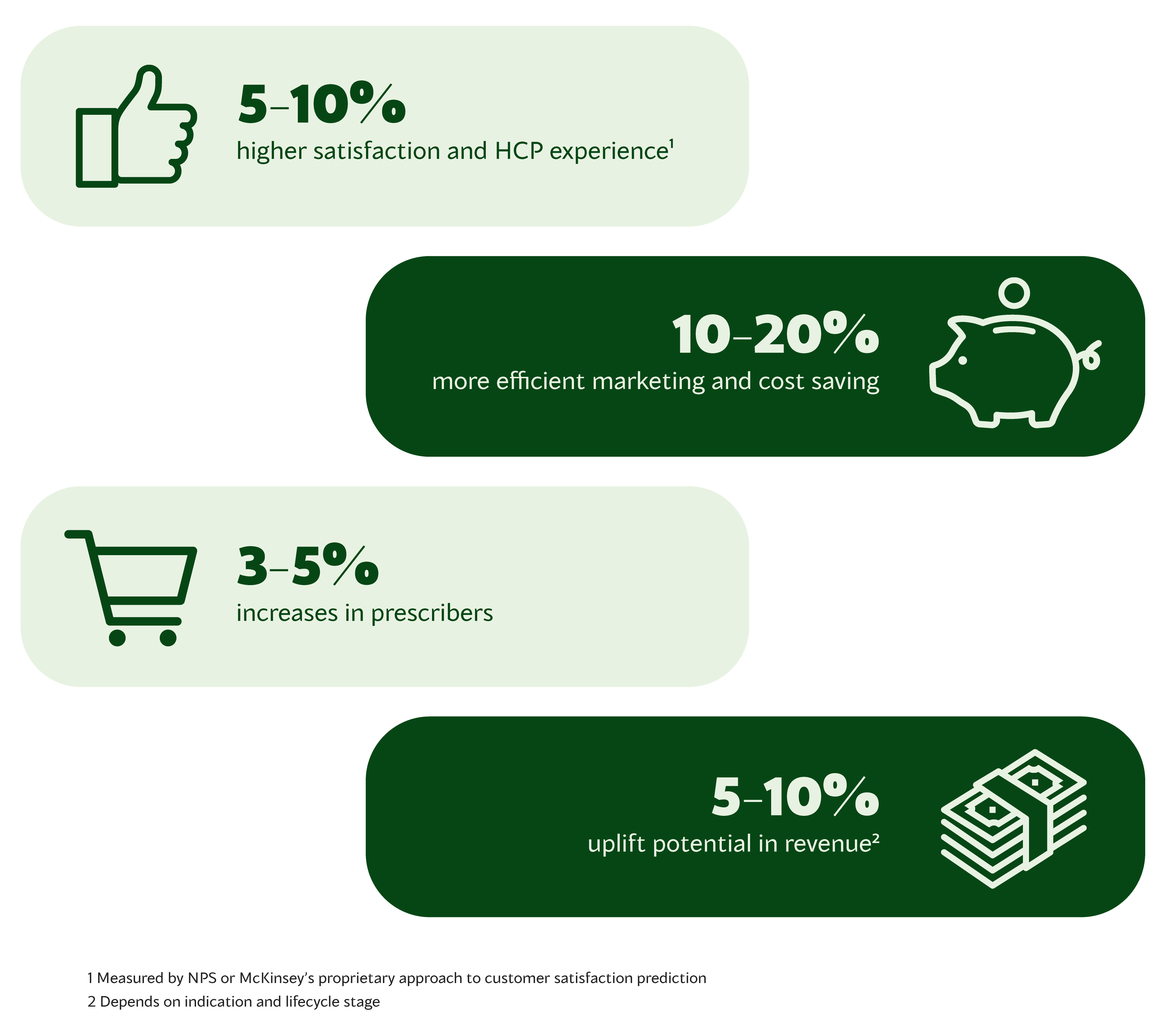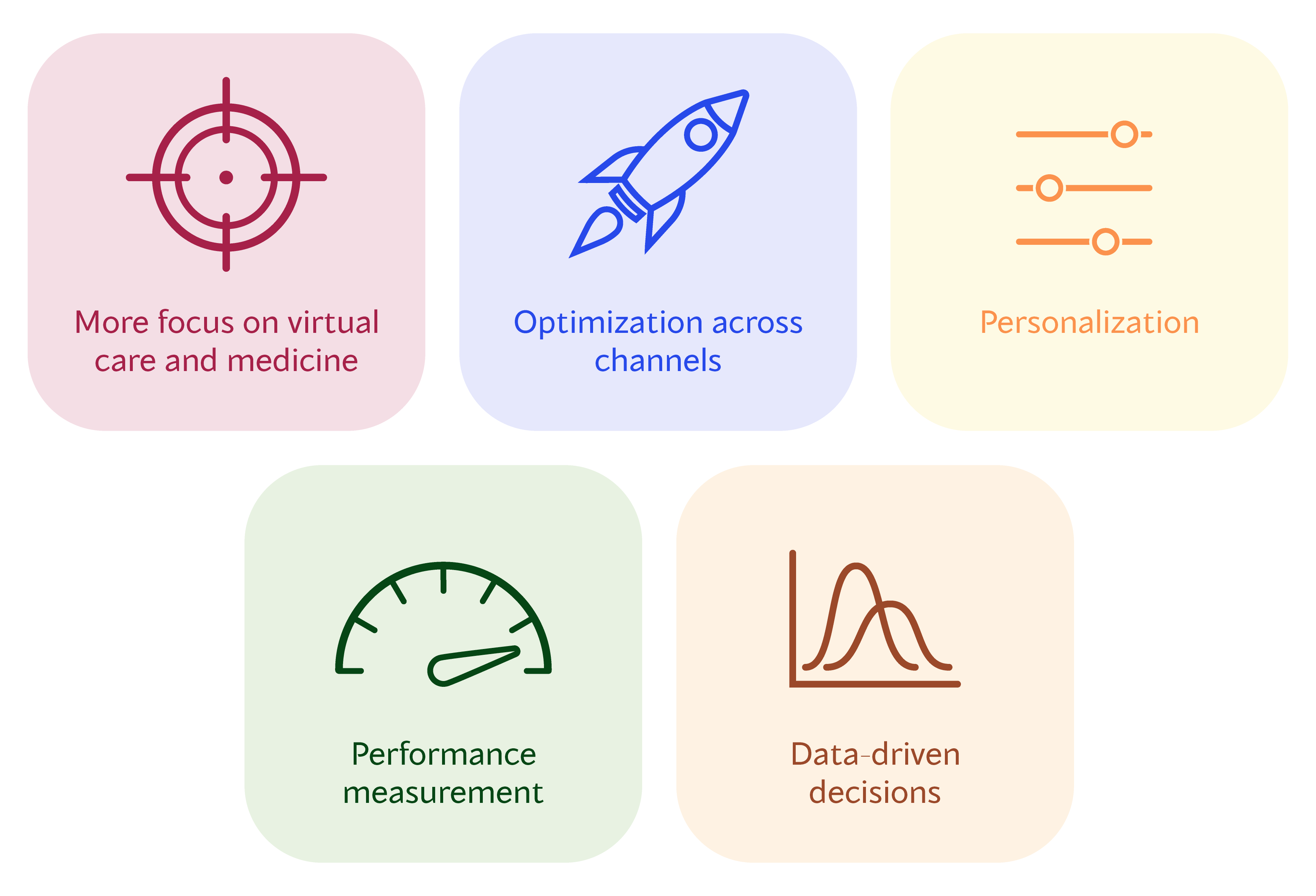Omnichannel pharma marketing: Driving success in the digital era
The pharmaceutical industry is always changing and expanding, as there are new products, technologies and customer demands to keep up with. This makes marketing as an industry more complicated because companies need to reach customers through a variety of different channels and touchpoints.
Omnichannel marketing is a strategy that addresses this complexity. It aims to connect with customers through all channels and touchpoints. In this blog post, you will find out about the advantages of omnichannel marketing in the pharmaceutical industry and its key elements.
What is Omnichannel Marketing?
Omnichannel marketing is all about creating a smooth and consistent experience for customers, no matter which channel they use. It involves using various channels like email, social media, websites and mobile apps to connect with customers at different points in their journey.
When a company adopts an omnichannel approach, it carefully plans the customer's journey and ensures the experience is the same across all channels, whether online or offline. Whether a customer visits a webpage, uses a mobile app or goes to a physical store, they receive a cohesive experience and consistent messages.
In short, omnichannel communication provides an enhanced customer service experience and focuses on delivering a unified message to the target audience through different channels.
How is this then applied to the pharmaceutical industry? Our target audience can be found in print magazines, various websites and in both online and offline communities. They are everywhere.
These audiences are often busy and want to access information quickly, making it possible to make decisions without waiting. As a pharmaceutical organisation, you need to be present and available to meet their needs instantly. Additionally, you can obtain feedback from the audience right away.
Why is Omnichannel in Pharma so Important?
In the past ten years, there have been significant changes in how doctors access information. Traditional marketing strategies have become less efficient mostly because doctors are difficult to reach because they have limited time to review messages.
The healthcare sector used to heavily rely on face-to-face interactions for marketing. However, there has been a notable increase in digital communication channels in recent years. As new specialty medicines are being continuously developed, doctors face the challenge of finding the best medicine for their patients from a multitude of new treatments.
Time is of the essence.
When it comes to pharmaceutical companies reaching out to prescribers with the right medicine for their patients, the window of opportunity is often small. Therefore, an accurate, real-time and data-driven marketing strategy is vital.
Always consider the cost-per-contact when implementing marketing tactics.
Relying solely on face-to-face visits without utilising the right digital channels can lead to high costs-per-contact, which can negatively impact the return on investment for your business.
A formalised approach matters.
Furthermore, without a formalised approach and clear tactics for engaging the target audience, there is a lack of strategic engagement. It becomes challenging to determine which channels to use, how to track a doctor’s activity on a website or how to guide them toward making a decision.
This is why high-engagement strategies like omnichannel pharma marketing are necessary. With this type of strategy, you can reach doctors through various channels without bombarding them with simple advertisements. Instead, the focus is on creating a creative customer journey using all communication channels.
Multi-channel vs. omnichannel pharma marketing
Multi-channel marketing has been put forward as a solution to overcome marketing challenges, but it has had limited success. It involves multiple channels for engagement in parallel, yet they are still isolated from each other.
There has now been a shift towards omnichannel pharma marketing, which integrates all channels into a cohesive strategy. Unlike the fragmented approach of multi-channel marketing, omnichannel pharma marketing synchronises various channels (personal, non-personal and media) and caters to the needs of different stakeholders such as consumers/patients, healthcare professionals and payers.
An integrated approach is necessary to stand out in today's crowded pharmaceutical marketplace.
To succeed, pharma brands need to utilise new technologies and develop an omnichannel marketing strategy that includes personalised content and multiple touchpoints. This leads to better engagement with healthcare professionals and drives increased prescribing behaviour.


Benefits of Omnichannel Pharma Marketing
Pharma companies are adopting omnichannel marketing, because it offers clear advantages over using separate channels. It benefits both the companies and healthcare professionals (HCPs). Companies can market more effectively and efficiently by using insights from customers to improve their marketing strategies. HCPs have a better experience because they receive content that is relevant to their needs, delivered on time and engaging, thanks to digital technology.
HCP engagement
In omnichannel pharma marketing, HCPs have a more engaging experience compared to multi-channel marketing. The content evolves as HCPs move forward, keeping them interested and clicking for more information. By designing customer journeys based on specific profiles, the content becomes more relevant and valuable.
Customer understanding
Omnichannel pharma marketing gives you a complete picture of each HCP across different channels. Whenever an HCP interacts, their actions reveal their interests, knowledge and preferences. By using this data to create more relevant communications, you start a cycle of improvement: targeted customer journeys provide better data, allowing for further improvements.
Efficiency
When content is spread across multiple channels without being properly organised, HCPs have to spend time finding and sorting through information themselves. It requires them to be high motivated, but most of the time this is not the case, and much content remains unused. That's why providing HCPs with a curated experience is more effective. By making it easy for them to access content, more of it will be seen and can make a meaningful impact, giving a positive return on investment.
Customer-centricity
Pharma companies need to prioritise customer needs in their engagement strategies. Omnichannel customer journeys offer a practical approach to achieving this. Although it's a big change, you can start small by using existing content in simple customer journeys. As you become more familiar with it and collect better data, you can gradually make it more advanced and personalised.
Effectiveness
The omnichannel strategy helps you reach your marketing goals. It's not about randomly sharing information and hoping for the best outcome; instead, you plan strategically by delivering the right content, to the right person, in the right order. Omnichannel provides the structure and tools to make this strategic approach possible.
Relevancy
Omnichannel allows for more targeted communication. You can create customer journeys that cater to specific needs by aligning marketing strategies with customer profiles. This approach benefits HCPs who want personalised content and curated experiences.

Key Elements of the Pharma Omnichannel Marketing Strategy

More Focus on Virtual Care and Medicine
Covid-19 has shown pharma companies the importance of virtual communication and integration across channels. It showed that focus should go to new modes of engagement, adjusting messaging to reach all parties. Pharma companies need to prioritise virtual care and medicine, reducing reliance on face-to-face interactions for HCPs, physicians and patients.
Optimisation Across Channels
Pharma companies can no longer rely on single channels for effective marketing. With customers having multiple touchpoints, adopting omnichannel marketing is crucial. It optimises messaging across channels and audiences to deliver exceptional experiences. Focusing on a few channels alone limits the reach of the message.
Personalisation
Multi-channel marketing lacks personalisation and consistent messaging across channels. In contrast, omnichannel marketing utilises advanced technologies, analytics and data to target customers based on their specific needs. It effectively serves customers throughout their brand journey.
Performance Measurement
Emerging technologies like AI, ML (machine learning), and NLP (natural language processing) have made it easier for pharma companies to track and measure marketing metrics across channels. It is now possible to track dynamic analytics on individual customers, leading to smarter marketing campaigns and sharper customer insights.
Data-Driven Decisions
Omnichannel marketing provides easy access to customer data, enabling informed decision-making. Pharma companies can target specific audience profiles, allocate resources effectively and optimise marketing ROI based on a thorough understanding of their audience.
How to Implement Omnichannel Marketing in the Pharmaceutical Industry
Implementing omnichannel marketing within the pharmaceutical industry needs a strategic approach that acknowledges the industry's distinct challenges and prospects. Here are some key steps to follow:
- Define your target audience: Identify your target audience and the channels they use to access information and engage with your brand.
- Develop a content strategy: Develop a content strategy that delivers valuable information and resources through various channels, such as social media, email and mobile apps.
- Create a personalised experience: Use customer data to craft a personalised experience for customers, offering relevant information and resources based on their preferences and behaviour.
- Use analytics to measure results: Use analytics to monitor customer interactions across all channels and touchpoints and measure the effectiveness of your marketing campaigns.
- Stay compliant: Ensure that all marketing and advertising materials comply with regulatory guidelines and industry standards.
Conclusion
Omnichannel marketing is an effective strategy for pharmaceutical companies looking to reach customers across multiple channels and touchpoints. By providing a seamless and personalised experience, companies can build trust and loyalty with customers, while also ensuring compliance with regulatory guidelines. Implementing omnichannel marketing requires a strategic approach that takes into account the unique challenges and opportunities of the pharmaceutical industry, but the benefits can be significant, including increased engagement, improved customer satisfaction and, ultimately, increased revenue.
Sources:
- Digital Marketing Institute: digitalmarketinginstitute.com
- Orientation marketing. Omnichannel marketing in pharma.
- Forbes. Omnichannel Is The Next Step In Pharmaceutical Marketing.
- Viseven. Build Omnichannel Marketing Strategy for Pharma and Life Sciences.
- PharmExec.com. Why Pharma Marketers Are Embracing Omnichannel Marketing.
- STAR OUTiCO. How to Improve Omni-channel Engagement.
- Omnisend. What is omnichannel marketing? Examples, tips & tools.
- Anthill. Omnichannel in pharma: meaning, strategy and best practice.
- McKinsey & Company. Demystifying the omnichannel commercial model for pharma companies in Asia.
- REVE Chat. Omnichannel in Pharma: Benefits & Strategies.

